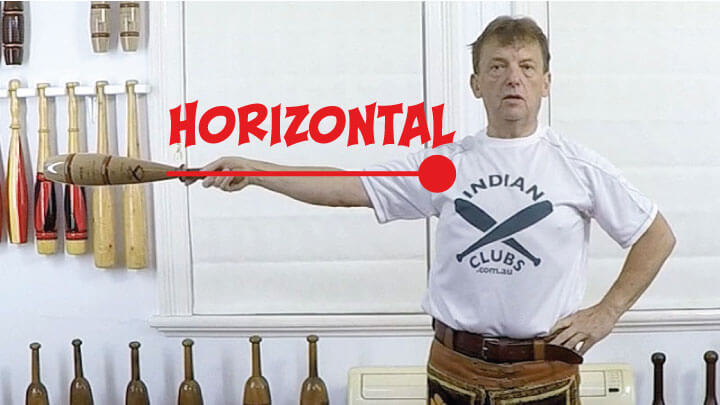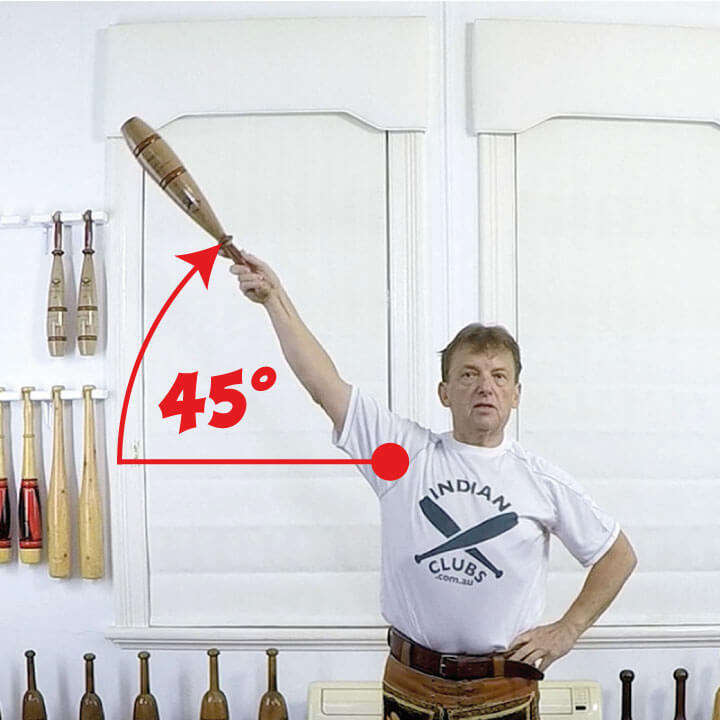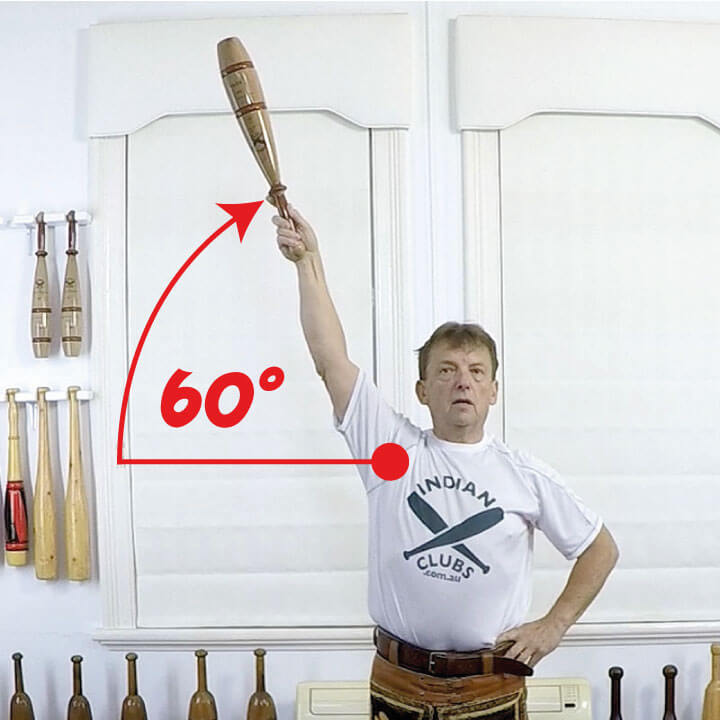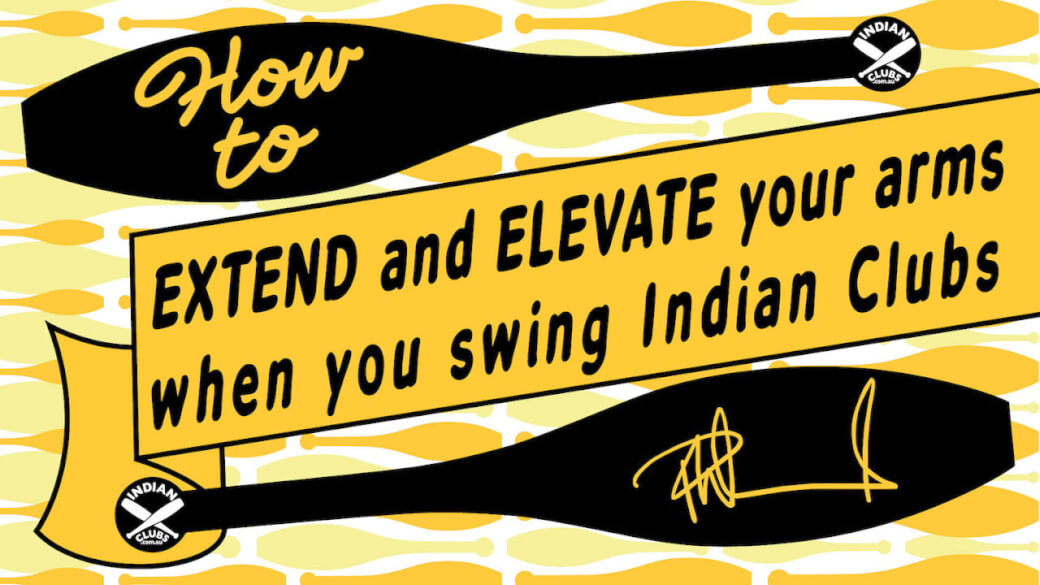How to Elevate and Extend your Arms when you swing Indian Clubs
Elevating your swing and extending your arms is an essential part of Indian Club swinging once you have learnt the basics.
You could call it “Reaching for the Sky”
This is a demonstration that compares an ELEVATED and EXTENDED swing to a LOW and NON-EXTENDED swing.
Elevate and Extend featuring the following combinations
- Outward heart-shaped swing
- Inward heart-shaped swing
- Alternate heart-shaped swing
- Parallel swing to the left and right
Indian Clubs made by Mike Romiski at Rosewater Kinetics
Elevate and Extend there are two correct angles

The elevation of the club and arm should be 45° above shoulder level which is parallel to the floor. This applies to both inward and outward synchronous movements.

For the alternate or asynchronous heart-shaped swing, the angle goes up to 60° above the shoulder level, which can be easily achieved due to the nature of the swing.
In the parallel swing, your arms should reach the full extension as described for the alternate heart-shaped swing, which means 60°, however, the difference is that the arms achieve independent elevation and extension.

Check yourself in a mirror, the mirror never lies
No self-adulation here, check your form.
Make sure that your movements are correct, and then turn away from the mirror to check that your motor skills are memorised.
Elevate and Extend self-test
Lift your clubs and arms up above your head, keeping one arm stationary, swing the other arm and check your reflection to see if the moving arm is reaching the elevation and extension of the static arm.
How to achieve the correct ELEVATION and EXTENSION
- Loose grip
- Sabre to ring grip with finger leverage
- Your third or ring finger must rest against the pommel and act as a hinge/pivot during the lever action
Benefits of Elevate and Extend
Benefits of elevating your swing and extending your arms
- Full range of motion (ROM) of the shoulder girdle.
- Forearm working the fingers with a loose grip change, pulling and releasing the club handle.
- Qi Gong teacup exercise to practice the Ring Grip.
Rookie Mistake
Rookie mistake to avoid when your arms cross at the front of your body, try to alternate between left over right and right over left.
Easy to Forget
I have to admit that I forget to do this sometimes, especially when I am explaining something on a video and focusing on something else. However, you need to be aware and make every effort to get this right.
More complex swing sequences should follow the same concept of elevating your swing and extending your arms.
Elevate and Extend – HI/LO swing
If you have never done this before you should try changing your swing after the count of four.
For example, we will use the outward heart-shaped swing.
Perform the swing the way that you normally would do it, counting one, two, three, four, then try elevating your swing and extending your arms for the next four swings. Once that is complete to your own swing, and then the extended swing rotating between the two. You will be quite surprised at the difference between them.
Using a chair or wheelchair
If you have low ceilings try sitting in a chair and swinging your clubs to practice the elevation and arm extensions. Just be aware that you need to swing your arms forward past your knees to complete a swing, you have to consciously throw your clubs ahead of your knees. Great for anyone who is temporarily or permanently bound to a wheelchair.



